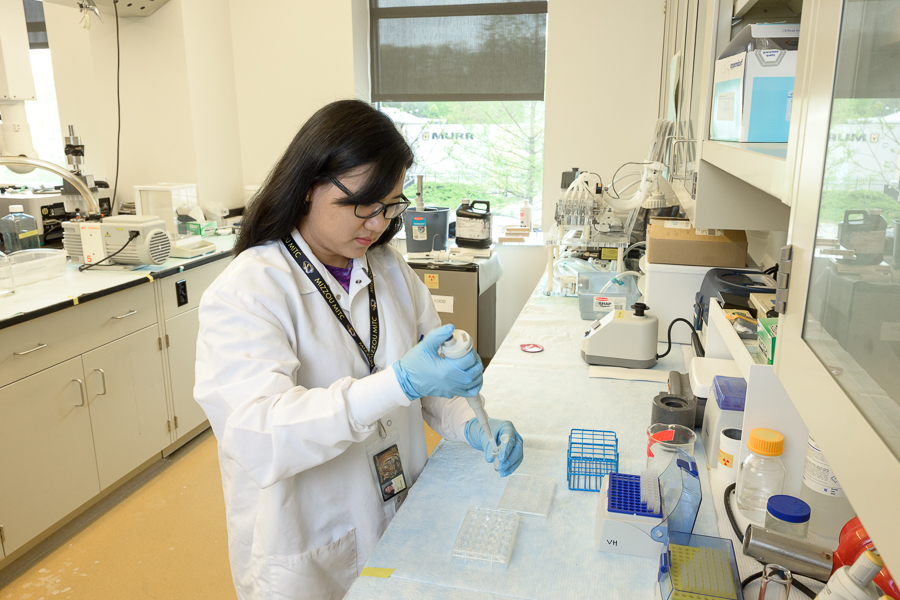Radiopharmacology involves investigating the in vitro binding to specific receptors/enzymes and determining the in vivo pharmacokinetics of radiotracers. MITC has the capabilities for these studies to be performed in one location.
Why Radiopharmacology
Traditional chemotherapy treatments, like cisplatin, are not site-specific and tend to lead to side effects like nausea and hair loss. At MITC, we develop radiopharmaceuticals that are specifically targeted to tumors and diseased tissues. MURR produces the therapeutic isotopes for the directed radiopharmaceuticals that go to a tumor cell type, whether primary or metastatic. Ideally, the therapeutic radiopharmaceuticals developed will have uptake at the focal site of disease and clear from normal organs, resulting in fewer side effects. Our researchers can develop compounds (theranostics) that can be labeled with therapeutic isotopes as well as diagnostic radionuclides for diagnosis and treatment.

MITC Researcher Van Ho
Our Work
Compounds are evaluated in vitro (typically in tumor cells grown in culture) to determine if the compounds have high affinity for specific proteins overexpressed on human cancer cells. Once it’s been determined that the agents have the ideal binding characteristics, they are evaluated in vivo (mouse models of cancer or other diseases) to see how they clear the blood into various organs and uptake or accumulate in tumors. In vivo studies are performed either as biodistributions or by small animal PET or SPECT imaging.